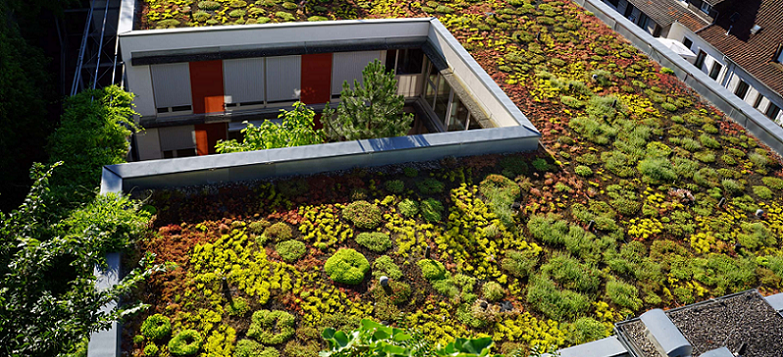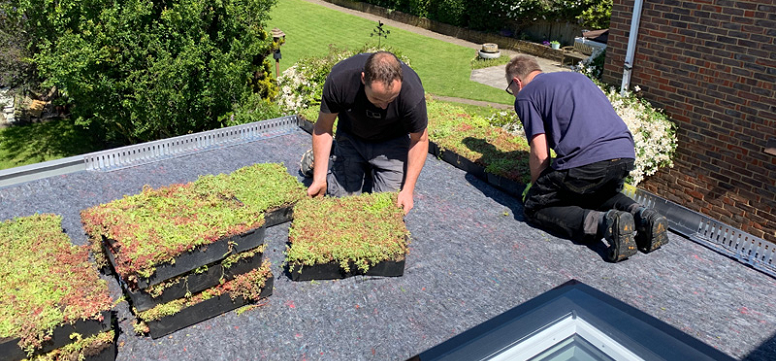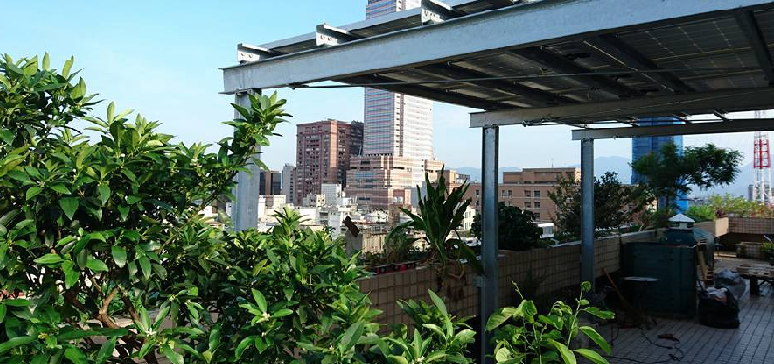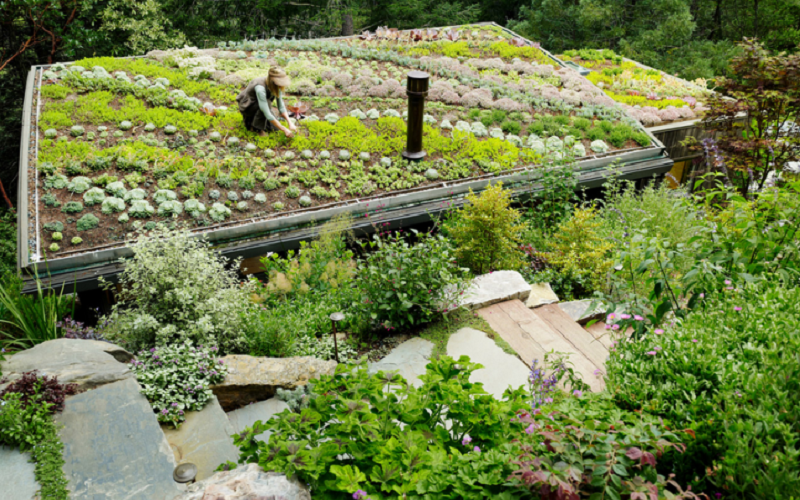Green roofs are surfaces, either completely or partially, covered with vegetation grown over waterproof layers made of various materials. These roofs offer low maintenance, cost savings, and multiple environmental benefits. Both flat and sloped roofs of homes, garages, apartments, offices or sheds can be converted into gardens for optimal utilization of unused space.
What Is a Green Roof?
A green roof is a type of roof that is covered with vegetation, either partially or completely. The vegetation is grown over waterproof layers made of various materials. Green roofs not only make use of unused space, they also save money and provide numerous benefits for the environment.
They require minimal maintenance and can be installed on any flat or sloped roof, including those of private homes, garages, apartments, office buildings, or sheds. In essence, a green roof is a unique way to turn any roof into a beautiful and eco-friendly garden.

Benefits of a Green Roof
Green roofs offer numerous benefits, both to the environment and to the building owner. Firstly, they help to conserve energy by providing insulation, which can lower heating and cooling costs. Additionally, they help to manage stormwater runoff by absorbing rainfall, which can reduce stress on local water treatment systems.
Green roofs also provide a number of environmental benefits, such as improving air quality by filtering pollutants and providing habitats for wildlife. They also help to mitigate the urban heat island effect, which is the phenomenon of increased temperatures in cities caused by the presence of hard surfaces like buildings and roads.
Moreover, green roofs provide a unique and attractive addition to any building, increasing property values and providing a peaceful and relaxing space for residents or employees. By installing a green roof, building owners can enjoy a low-maintenance and eco-friendly way to enhance their property and do good for the environment.
Before Getting Started
Before getting started on creating a green roof, there are several steps that should be taken:
- Assess the feasibility of your roof: Make sure your roof is structurally sound and capable of supporting the weight of a green roof. Consider the slope of your roof, as well as the orientation and access to the roof.
- Choose the right plants: Decide on the types of plants you would like to grow on your roof, taking into account factors such as the local climate, light exposure, and soil requirements.
- Determine the type of green roof system you need: There are two main types of green roof systems: intensive and extensive. Intensive systems are more complex and involve a deeper layer of soil and a greater variety of plants, while extensive systems are simpler and involve a shallow layer of soil and fewer plant species.
- Get professional help: Consider working with a green roof consultant or contractor to design and install your green roof. They can provide guidance on the best green roof system for your building, help you choose the right plants, and ensure that your green roof is properly installed and maintained.
- Obtain necessary permits: Before starting the green roof installation, make sure to obtain the necessary permits and approvals from local authorities.
- Prepare the roof surface: Clean the roof surface and make any necessary repairs. Install a waterproof membrane and drainage layer, as well as a layer of growing medium.

What You’ll Need to Create a Green Roof
Creating a green roof requires a number of materials and components to ensure proper installation and maintenance. The following is a general overview of what is needed to create a green roof:
- A structurally sound roof: The roof must be able to support the weight of the green roof system, including the plants, soil, and other materials.
- Plants: Choose plants that are appropriate for your local climate and the conditions on your roof, such as light exposure and soil requirements.
- Green roof system: There are two main types of green roof systems, intensive and extensive, and you will need to choose the one that is right for your building. The system will include a waterproof membrane, drainage layer, growing medium, and plants.
- Professional help: Consider working with a green roof consultant or contractor to ensure that your green roof is properly designed, installed, and maintained.
- Necessary permits: Obtain the necessary permits and approvals from local authorities before starting the green roof installation.
- Tools and equipment: You will need various tools and equipment to install your green roof, including a roof cleaner, waterproof membrane, and growing medium.

How to Create a Green Roof
Creating a green roof requires careful planning and execution to ensure proper installation and maintenance. The first step is to assess the feasibility of your roof, including its structure and slope, as well as its orientation and access. You will then need to choose the right plants for your local climate and the conditions on your roof, and determine the type of green roof system you need, either intensive or extensive.
Working with a green roof consultant or contractor can be highly beneficial in this process, as they can provide expert guidance on the best system for your building, help you choose the right plants, and ensure that the green roof is properly installed and maintained.
Before beginning the installation process, make sure to obtain the necessary permits and approvals from local authorities. The roof surface should then be prepared by cleaning it and making any necessary repairs, and a waterproof membrane and drainage layer, as well as a layer of growing medium, should be installed.
The green roof system should then be installed following the instructions provided by the consultant or contractor, including the plants, soil, and other materials. Regular maintenance is important to ensure the continued proper functioning of the green roof, including watering the plants, removing debris, and monitoring for any signs of damage.

